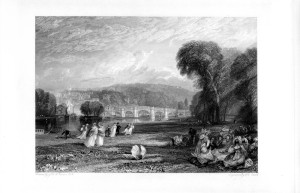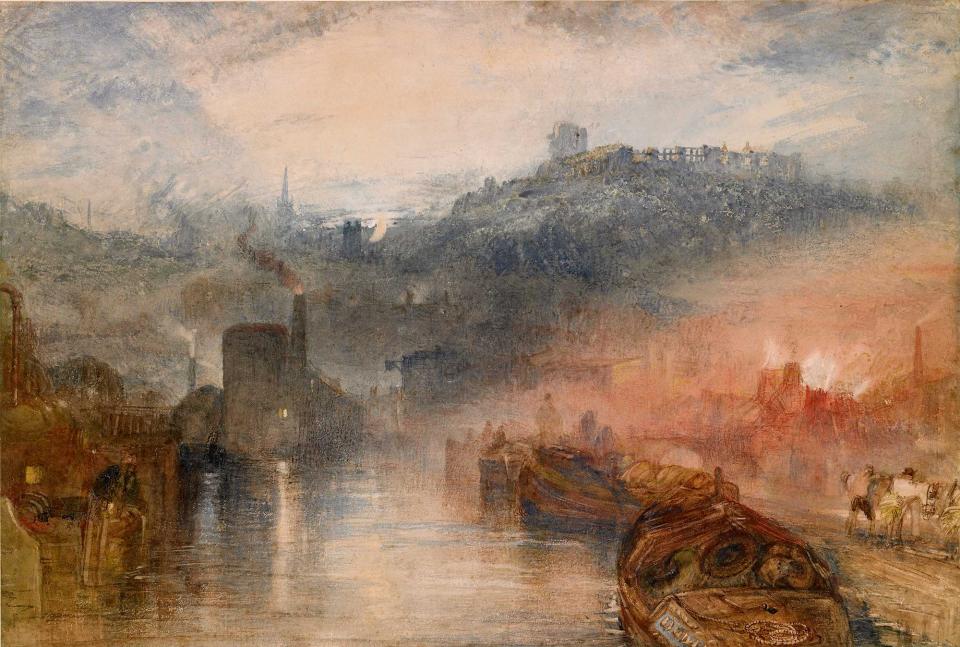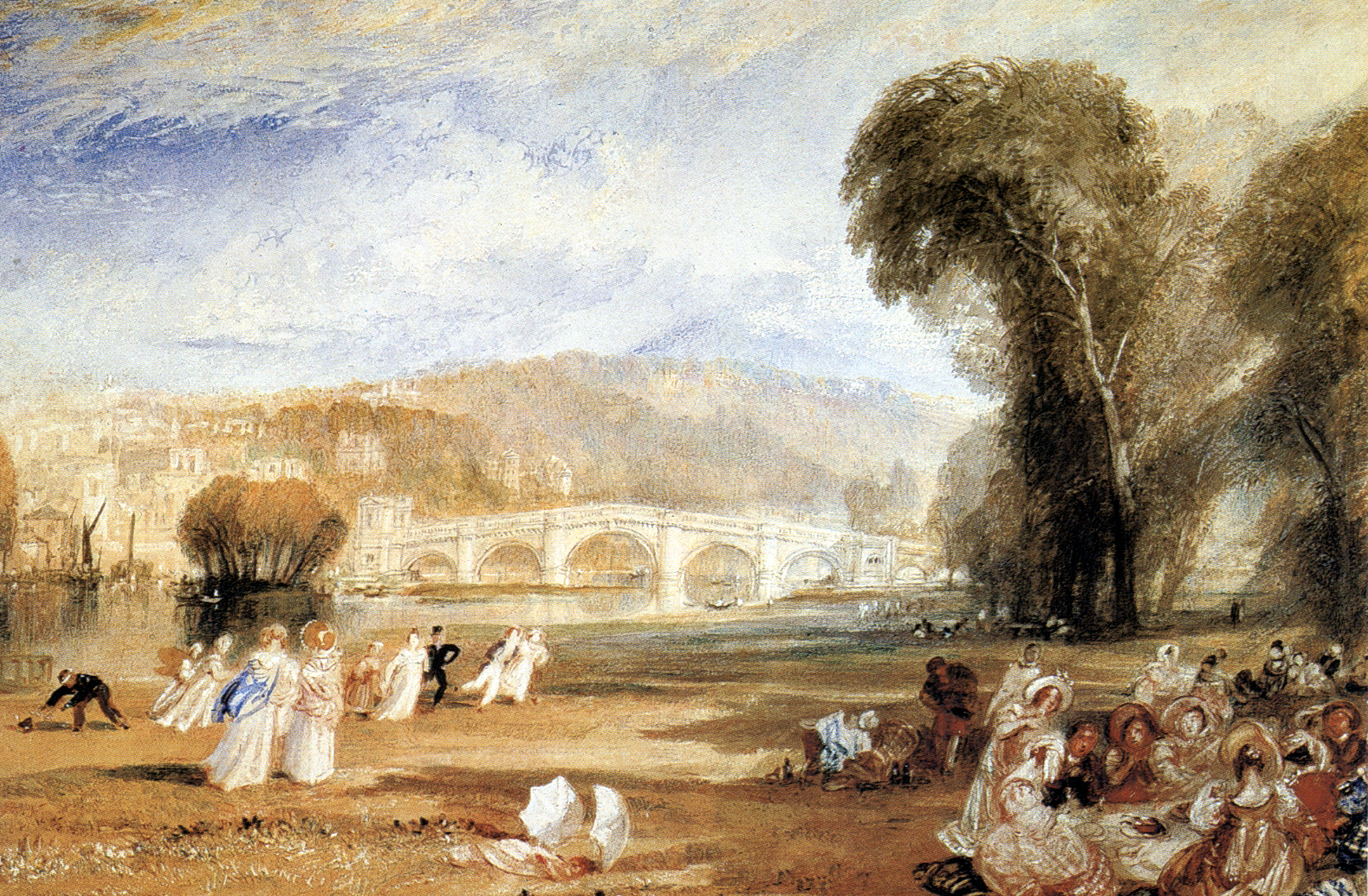
J.M.W. Turner. Richmond Hill and Bridge, Surrey (1828), steel engraving by William Smith (1832) in Picturesque Views in England and Wales (1827/38)
John Ruskin was introduced to Turner’s works when his father gifted him with the watercolor painting Richmond Hill and Bridge, Surrey (1828). According to the British Museum, the original title of the painting was Richmond Hill and Bridge, with a Picnic Party. But it was subsequently shortened, and the Picnic Party dropped.
In 1878, an exhibition of Ruskin’s paintings purposely contrasted Richmond Hill with Turner’s watercolor of the industrial city of Dudley, Worcester (1835). He made a point of adding “Play” to the subtitle of Richmond Hill “Play.” It was a painting he wrote, “A more wonderful or instructive piece of composition I could not have had by me ; nor was I ever weary of trying to analyze it. After thirty years’ endeavour, I finally surrender that hope — with all similar hopes of ever analyzing true inventive or creative work.” The view of Dudley, he labeled “Work.” 
Richmond is among Turner’s most delightful scenes showing Londoners out on the exposed sandy shore of the Thames at Richmond. It was then a well-frequented area a short ride by coach or boat from the crowded city. According to Turner, the picnic day is windy, and the picnickers struggle against a gust. The women’s skirts are blown back, and a man struggles to retrieve his hat. In a less windy location, a group has settled to dine on roast chicken and wine. (At least that all clearly seen.)
Featured Image: Richmond Hill and Bridge
See J.M.W. Turner. Richmond Hill and Bridge, Surrey (1828), steel engraving William Smith (1832) in Picturesque Views in England and Wales (1827/38); John Ruskin. Notes by Mr. Ruskin on His Collection of Drawings by the Late J.M.W. Turner, RA. Exhibited at the Fine Art Society’s Galleries. London: Fine Art Society, 1878

